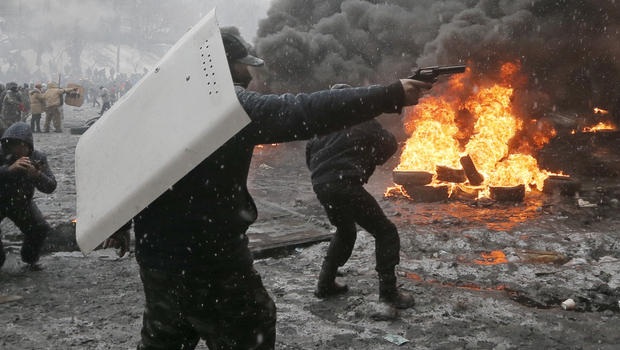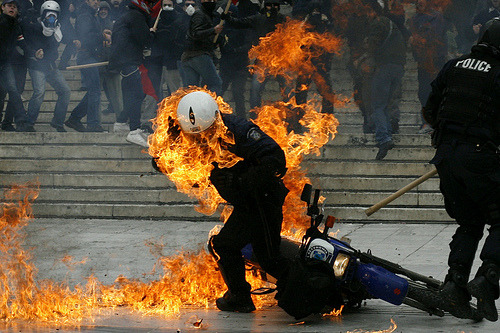Introduction to The Colonizer’s Corpse:
Open response to CIIC Director Joanna Saul’s invitation to present advice on maintaining mental health in 23-hour lockdown.
I received a letter from Joanna Saul, Director of the Correctional Institution Inspection Committee (CIIC), which oversees the prison complex the the Ohio General Assembly. She wrote, in part, “…CIIC is currently working on a resource for inmates in segregation or maximum security. We would very much appreciate hearing from you and other inmates regarding your segregation experience and, in particular, how you stayed emotionally and mentally strong in segregation? [Bold type in original.] Our hope is to provide suggestions to inmates in segregation for how to cope with being locked down for 23 hours a day. What advice would you give an inmate who is going to segregation?”
Below is my response to this invitation:
The colonizer’s Corpse: A Liberatory Approach to Maintaining Mental Health While Subject to the Fascists’ Torture Machine.
“…For the colonized, liberation springs only from the corpse of the colonizer.” –Frantz Fanon, Wretched of the Earth
Segregation is a traumatic experience. To stay sane, to stay mentally organized, you have to first be sane and mentally organized. That is, a “crazy” person can’t stay sane because a crazy person isn’t sane to begin with. So this is key: You have to think in a way that makes sense; you have to care about yourself and you have to be committed to acting in such a way that serves you best. That’s kind of a working definition of sanity–thinking, and then, as a result, acting, in a way that makes sense.
Thinking is key. You have to use your head for something other than a hat rack. Especially if you are spending a long time in segregation or isolation, since you’ll be spending a lot of time inside your own head. Any place you spend that much time you have to pay attention to the furniture, so to speak, the stuff that fills up your space, what you’re putting in it. What do you put in your head space? This is important because what goes on inside your head is more critical than what’s going on in the world around you.
People caring about themselves have to make sure they see the world clearly. You can’t react in a way that makes sense if you don’t understand what’s really happening to you. So sane people–people who think and act in ways that serve their interests best–have to first face the reality that confronts them. This means not running away from painful truths. This means being honest with yourself. If you want to stay sane you can’t run away from your experience or try to hide from it. You have to face it. But you face it with clear understanding. You use your mind and you look deeply at the experience so you can understand what it is that is happening and why it is happening, and then you can develop for yourself a plan or an approach for acting sane, for acting in your own best interests, and maybe even using this experience to gain some wisdom, an opportunity to grow.
The place to start is by understanding the situation you are facing, how you got there, and why it is happening to you.
“Rehabilitation never offered mental health, just the reverse. It involves communication only with staff who are not worth any contact at all. To listen to their philosophy, or accept their outlook will destroy you…” –Huey P. Newton, Revolutionary Suicide
Segregation and isolation are trauma. It hurts. This is the reality of it. What you are experiencing is designed to be painful. The State, the authorities, the ones who keep you locked up, have designed a system, and have perfected that system, for causing you trauma. In fact, the government has written books and manuals on it. These manuals were written in order to teach the people who keep you locked up so they can use, “the principle coercive techniques”* of “arrest, detention, deprivation of sensory stimuli through solitary confinement…, threats and fear…” What this means is, the ones who keep you locked up will use a combination of these things in order to cause a response from you. The response they want to cause is “debility, dependence, and dread.” “Debility” means the opposite of “ability.” Debility is, in a sense, making someone worse, breaking them in some way. “Dependence” is the opposite of “independence.” Dependence is where you can’t do for yourself any more, and you must count on someone else to do for you. “Dread” is like fear, only it also means to lose hope.
So the reality of your situation is, the people in charge have figured out the method for turning you into someone less able, broken, and hopeless, all by putting you through conditions that are very painful. As the process continues, “day after day if necessary, the subject begins to try to make sense of the situation, which becomes mentally intolerable.” “Intolerable” means you can’t stand it. Your situation is designed to cause “the maximum amount of discomfort…” In this “mentally intolerable” situation you face, a situation designed to cause “the mximum amount of discomfort,” it deprives your mind of “contact with an outer world and thus forcing it in on itself…” The trauma you experience “after weeks or months of imprisonment in an ordinary cell can be duplicated in hours or days” in isolation. As the CIA manual concludes, describing the conditions of confinement you will experience in segregation and maximum security, “…in the simple torture situation, the contest is one between the individual and his tormentor…”
This is not presented to shock you or to scare you. It is presented so that you can have a clear idea of what you face. Only by seeing reality as it is can you react to it in a way that makes the most sense for you. You have to see what you face and what it is designed to do to you, and when you know that, when you can see it for what it is, you are better equipped to respond to it.
Whatever you did to come to prison (or didn’t do), and whatever you did to go to segregation or level 4 (or didn’t do), you are in the custody of people who want to make your life “mentally intolerable,” and they are putting you through “the simple torture situation.”
They know that what they are doing to you will not make you a better person. They are not doing this to you to help” you or to “reform” you. This is designed to destroy you. This is very important to know, because it can guide your approach to this trauma, this “simple torture situation,” if you recognize that you are not being “corrected,” i.e., made better, but you are being debilitated, i.e., made worse.
It is a necessary and healthy thing to call something what it really is. The words we use have an influence on how we see things. When you use words, even in your head, like “corrections officer,” and “inmate,” you create a picture of “correcting,” a picture of an offender who has offended; but when you use the same words, even if just in your head, that are used by the very same people who wrote the manuals and designed this system, you see a “tormentor” and a “subject,” you see a “simple torture situation” that involves a torturer and a victim.
Why is this important? Because you can’t expect ice cream to come out of a toaster. A toaster is a machine that is designed to do one thing. So if you hold your cone under the toaster and expect ice cream to come out, you are going to be very disappointed. The same is true for the prison’s isolation unit. This is a machine that is designed to do one thing.
Don’t expect this machine to do anything else. You are in the “simple torture situation.” It is a simple fact that you cannot expect those who subject you to this simple torture situation” to offer you any real assistance. People who torture are not nice people.
If you expect them to be kind and caring and good, you are expecting ice cream to fall out of a toaster.
It may be that you have met staff who seem like they are shocked and saddened by the conditions they witness. They may talk about how things are unfair and how the situation needs to change. They may even try to address some conditions that they think are too much. They take no personal joy from the suffering they see and they make it clear that they are “only doing their jobs.”
And that is the point, isn’t it? They do their jobs. They work, they keep it going, and they receive their pay-checks for doing “their jobs.” Their jobs include keeping you in “debility, dependence, and dread.” So “their jobs” are to serve the “tormentor” and they do those jobs, despite the harm it will cause you.
We must also consider that everyone working for this machine knows what it does to you. Hundreds of studies have shown again and again how isolation causes mental illness in humans. But more than that, by the manuals that were written, we know that’s what it’s designed to do. This is no mistake. This is no accidental result that happens again and again and again, any more than a Toyota Camry “accidentally” comes off the end of the assembly line at the factory over and over and over again.
The factory makes cars. It’s designed to. The isolation unit makes broken minds. It’s designed to.
And beyond that, think about it: Why is this “resource” being written? It’s being written because staff at the CIIC recognize that the brutal, harsh conditions of isolation are causing prisoners to become mentally ill so, rather than end the practice of driving prisoners insane, they opt to give you advice from prisoners who have survived a process designed to drive them insane. That speaks loudly. Would “kind,” “caring,” “concerned,” “nice” people work with every ounce of their beings to shut down a torture machine, or would they hand its victims a well-produced brochure?
So, for our purposes of staying sane and seeing the situation as it is, recognizing reality so we can act in our own best interests, we have to set aside false ideas that really do not fit, that do not serve us honestly. We have to use words that paint an accurate picture.
You have an enemy. Your enemy is evil–evil personified, and it takes someone evil to engage in torture. Your evil enemy intends to torture you for a long, long time, until your mind is broken. The best you can hope for is for the most sympathetic people to hand you advice on how to survive their “simple torture situation.” You can only count on you at this point.
“The State has never any object but to limit the individual, to tame him, to subordinate him, to subject him to something general; it lasts only so long as the individual is not all in all, and is only the clearcut limitation of me, my limitedness, my slavery.” –Max Stirner
You may ask, “Why do I want to face this? It feels very hopeless.” What we’ve done so far is simply an inventory of your reality. You have some serious forces stacked against you. But you aren’t better off if you don’t see it or if you ignore it. You aren’t in a better place if you convince yourself of some fairie tale, some myth that your enemy feeds you to keep you asleep and “under control.” If you buy into those lies and let them guide you, the damage you will experience will be the same; the only difference will be that your actions will be more predictable and more of a benefit for the torture machine to keep going and going and going.
If you buy into the false idea that your “tormenters” (the government’s word, remember) are the “good guys,” and you “put yourself here,” and you “deserve” this (whatever “this” is), and this trauma is to “correct” you or make you “better” or “teach you a (pro-social) lesson,” you will experience the same trauma as everyone who has the courage to face the truth. The only differences will be that (1) you won’t know why this is happening, (2) you won’t be able to figure out how to prevent your enemy from succeeding because you won’t see what your enemy is really trying to do to you, and (3) you won’t be able to act in your own best interests because you misunderstand your reality.
So, by facing this reality, you will be establishing a principle that’s absolutely crucial for maintaining your sanity. It’s this: Always seek the truth, no matter how bad it is.
One way to think of this is a scene from the movie, “The Matrix.” The main character, Neo, meets Morpheus, who offers Neo the chance to know the truth. If Neo chooses the red pill, he wakes up to reality. If he chooses the blue pill, he remains asleep.
If you want to get through “the simple torture situation” and survive what your “tormentor” does to you, choose the red pill.
Always choose the red pill.
Once your eyes are open, it gives you things to think about. You can look at every experience, every single element of your situation, and you can ask yourself, “Why is the enemy doing this to me? How is this supposed to make me feel? How is this supposed to impact my mind and my health and my struggle? How can I respond to this in a way that serves my survival and my long-term success?
For instance: Have you ever noticed that most segregation units are freezing cold all year around? Why is that? Why does the enemy keep you intolerably cold? First, there’s the discomfort so, on the most basic level, your enemy simply wants you to suffer. But second, cold people will seek to get warm and the only feasible strategy for that in segregation is to get under your covers; you remain inactive in bed. This serves the enemy in several ways:
1. Inactive people burn fewer calories, so the enemy can cut your food portions and you won’t lose weight. Your enemy saves money on food.
2. If you’re laying in bed, you’re not doing something else. You’re not writing letters or building muscles or sharing ideas or building unity or writing an inspiring poem.
3. People laying in bed will sleep, and sleeping people’s behavior is predictable.
4. Constant cold has a psychological impact, as it wears on your morale and makes you feel hopeless. It contributes to the assault on your mind.
Once you recognize this and see the truth of it, what can you do? Well, for a start, simply knowing what is being done to you (and knowing why) makes the intolerable a bit more tolerable. The cold is a tactic being used on you. And when you know your enemy’s designs, you can use your head to prevent his success.
How? Two ways. There are actions you can take to “adjust to the conditions,” and actions you can take to “change the conditions.”
Actions you can take to adjust to the conditions would be to find alternatives for staying warm. If you have 3 pairs of socks, wear 2 of them and use the third pair as mittens so you can stay up, stay awake, read and write. You can wrap blankets around you while you pace the floor. You can write a poem or a rap and between verses you do push ups–this keeps you in shape and keeps you warm. You can pace and think and get a good understanding of the situation you face, and then share your insight with other prisoners so they too have the tools to effectively struggle and maintain. You can read literature from others who share your perspective and write to them, finding ways to cooperate and build relationships and start projects.
Which leads to actions that “change the conditions.” You may decide that adjusting to conditions isn’t good enough; you want the conditions to change. Rather than wrapping yourself in blankets, you want to make the enemy’s torture machine turn the heat up. This is a very different approach from “adjusting.”
What can you do to make the torture machine turn up the heat? And, at the same time, within that question is another question: What can you do to stand up for your dignity and affirm your human value and combat the forces that work toward your destruction? And still another question: What can you do to take a healthy and affirmative approach to exercise your own personal power in order to change the world for the better and give yourself something to seel a sense of accomplishment?
There exists a prison grievance process, but this is an open joke among prisoners and staff alike. The grievance process serves to misdirect prisoners from engaging in any effective response to wrongs and serves as a kind of gauntlet where prison officials can identify future possible lawsuits and employ a harassment campaign to coerce potential prisoner litigants to give up. At its best, the grievance process represents an effort to get a career prisoncrat to declare that other career prisoncrats wronged a convicted felon no one cares about.
Being able to see the grievance process as a tool of your enemy’s program liberates you to think of other ways to exercise your personal power to change conditions. What else can you do?
Individual actions are very limited. The enemy has a vast machine. So, it is a good idea to build a working group, a collective of prisoners who cooperate in struggle. The larger the number of prisoners willing to struggle, the more collective power you can bring against the enemy.
Mention must be made here that your enemy may appeal to “rules” that the enemy imposes in order to keep you powerless while trapped in the torture machine. In reality, these rules do not exist. The enemy appeals to “rules” as part of his false mythology that he is “the good guy” and you are “the bad guy,” that he is “correcting” you because you are “maladjusted,” that all of this is for “your own good” and you “did this to yourself” and these “rules are necessary.”
Reality is quite the opposite. Your enemy tortures human beings. Your enemy is evil personified. Anyone who tortures has no respect for laws or rules or morals or the basic foundations of human relations, so any appeal to “rules” is really a trick, a manipulation to get you to abandon any strategy that would be effective for forcing real, substantive change. In reality, it is not “moral” or “right” to abide by the enemy’s “rules” and abandon efforts to stop his evil agenda. In fact, it can easily be argued that you have a moral duty, an ethical responsibility to stop torturers by what Malcolm X referred to as “any means necessary.” Your inaction, your following the “rules,” guarantees that others will be tortured and destroyed, perhaps generation after generation, their minds mangled by a machine designed to tear apart human beings from the inside out.
It is both immoral and psychologically unhealthy not to resist evil.
So, from this view, it becomes necessary to engage the enemy in the most effective way to save the most lives. To do that, you must bring pressure, leverage upon your enemy. To borrow from his own playbook, you must make his situation “intolerable,” and creat the situation where torturing you (or continuing those conditions you most wish to change) becomes more costly, more painful, and more troublesome than meeting your demands.
From a lockdown isolation unit there is little that can be done. However, those tactics that can be engaged can be very effective.
For instance, prisoners can simultaneously flush toilets and break pipes. Plumbing is designed to hold only a certain amount of water flow. Repeatedly breaking the pipes becomes costly, time-consuming, and disruptive for the enemy.
Also, prisoners can block cell door windows and barricade cells, requiring the enemy to summon cell-extraction teams. This becomes costly, time-consuming and disruptive.
These kinds of tactics are most effective if sustained by large numbers of prisoners over a duration of time.
From a superficial analysis, this kind of approach could be seen as “self-defeating” or “maladjusted,” particularly if someone sees the torturer’s system as legitimate. Persons under this kind of delusion would be horrified by this advice and would instead urge prisoners to go along with the program, to be the proverbial “good Germans,” little Adolf Eichmanns following orders and keeping the program going. Their position is built upon the false belief that “good behavior,” i.e., conduct that does not disrupt the torture machine’s efficiency, is rewarded, while “bad behavior,” i.e., conduct that disrupts the torture machine’s efficiency is punished appropriately.
This myth is so provably absurd it does not even merit a response.
However it must be pointed out that there is what seems to be a contradiction–since resistance will provoke a state response, is it not fair to say that engaging in struggle is not acting in one’s own best interests? This is a valid question, and the answer depends upo whether you look at your short-term, immediate interests, or whether you look at your long-term, larger interests. Do you care more about your immediate situation, your immediate personal comfort? If so, then you serve those interests better by going along with the enemy’s torture program and helping his evil agenda continue. But if you care about your sanity–which is really the important prioty, the true topic of all of this–then you must act in a way that preserves your dignity, your principles, and your sense of justice by exercising personal power and contributing to a greater good, even at the expense of your immediate well-being.
To give an example of this conflict of interests, consider a hunger-striker who suffers hunger and diminished health in order to force the enemy to meet important demands related to human dignity. One may argue that it is “insane” for the hunger-striker to harm self, that long-term sanity cannot be served if the hunger-striker starves to death. But from another view, the hunger-striker sees the “harm” of hunger and health effects far outweighed by the greater “harm” caused by the conditions that the hunger-striker struggles to change.
This is a far more valid conception from a mental health perspective, though an uneasy and uncomfortable one for apologists of state power since, by this conception, “suicide bombers” can be understood as engaging in a perfectly healthy response, from a psychological perspective, if the so-called “suicide bombers” are acting under a firm belief that their actions will result in changes that will benefit their children or future generations. In that way, a suicide bomber, psychologically speaking, would be no different from a soldier jumping onto a grenade to save his platoon, except one is a bit more assertive and proactive.
Concusion: Psychological Necessity of Revolutionary Violence
As a final note, those who defend the torture machine may object that the approach advocated here “promotes violence.” Again, this analysis proceeds from the delusion that the torturers are “good” and “valid” and “right.”
A more accurate assessment is to say that the stat itself is violence. Its every component is violence, from its means for maintaining itself to every project the state undertakes.
The state maintains itself through taxation: Pay, or else. It compels obedience: Obey the laws, or else. It defends the economic status quo and its ruling elite: Work, or else. It has now intruded into our mental lives, dictating what we can think and believe (or else). So, in this context, even the state’s most “benevolent” “service,” at base, rests upon a billy-club, a shot-gun, or an Apache attack helicopter.
In light of this, there is never an absence of violence so long as the state exists. The state makes violence inevitable. The only question is whether the state will be unilaterally punching the subjects in the frace, as it has for centuries, or whether the subjects will be punching the state back.
If peace, the absence of violence, can only be achieved in the absence of the state, which is itself violence, then with any action undertaken to limit or diminish the state, no matter how “violent” the action, the cause of peace is better served. This is not really an opinion, but is an objective observation of fact that really isn’t disputable.
If someone wants peace and not violence, it’s necessary to tear down the state’s torture machine. This is not just a matter of social justice, morality, or political theory, but is an indispensible approach for the maintenance of individual mental health for those trapped in the “simple torture situation.”
***
*All quotes in text taken from the KUBARK Counterintelligence Interrogation Manual prepared by the Central Intelligence Agency.
———————–
Sean Swain is a prisoner in Ohio State penitentiary and a regular contributor to Fubar. He does not have computer access and cannot receive email. Sean’s website http://seanswain.org is maintained by his supporters.
Sean’s address is:
Sean Swain 243205
Ohio State Penitentiary
878 Coitsville-Hubbard Rd.
Youngstown OH 44505
 Third part in a series. Here’s part 1 and part 2
Third part in a series. Here’s part 1 and part 2


 Dear Ukrainian People,
Dear Ukrainian People, In
In  Media Release
Media Release